Teriyaki Chicken Casserole
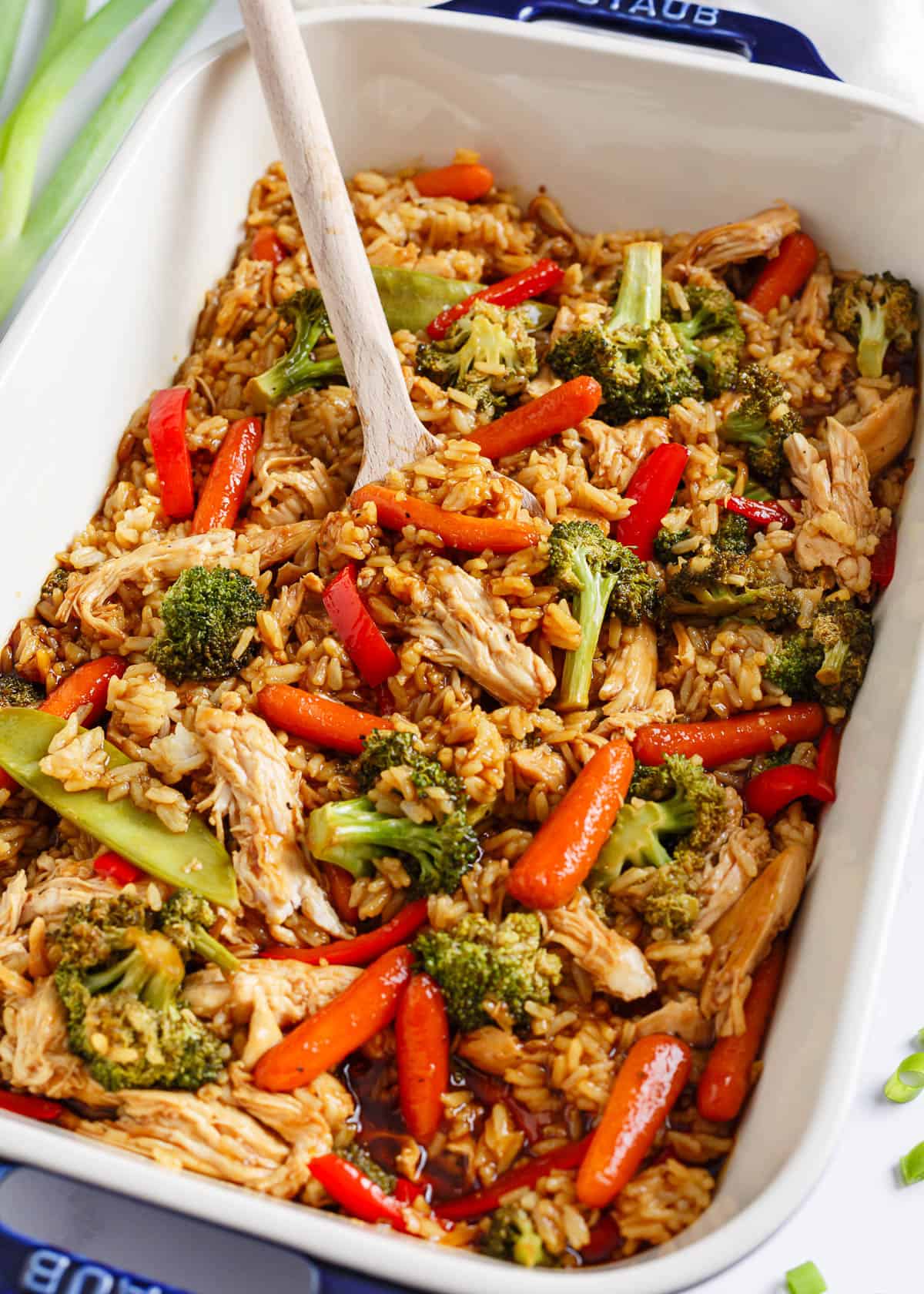
This is the kind of one-pan wonder that makes you look like a kitchen genius while secretly being easier than ordering takeout.
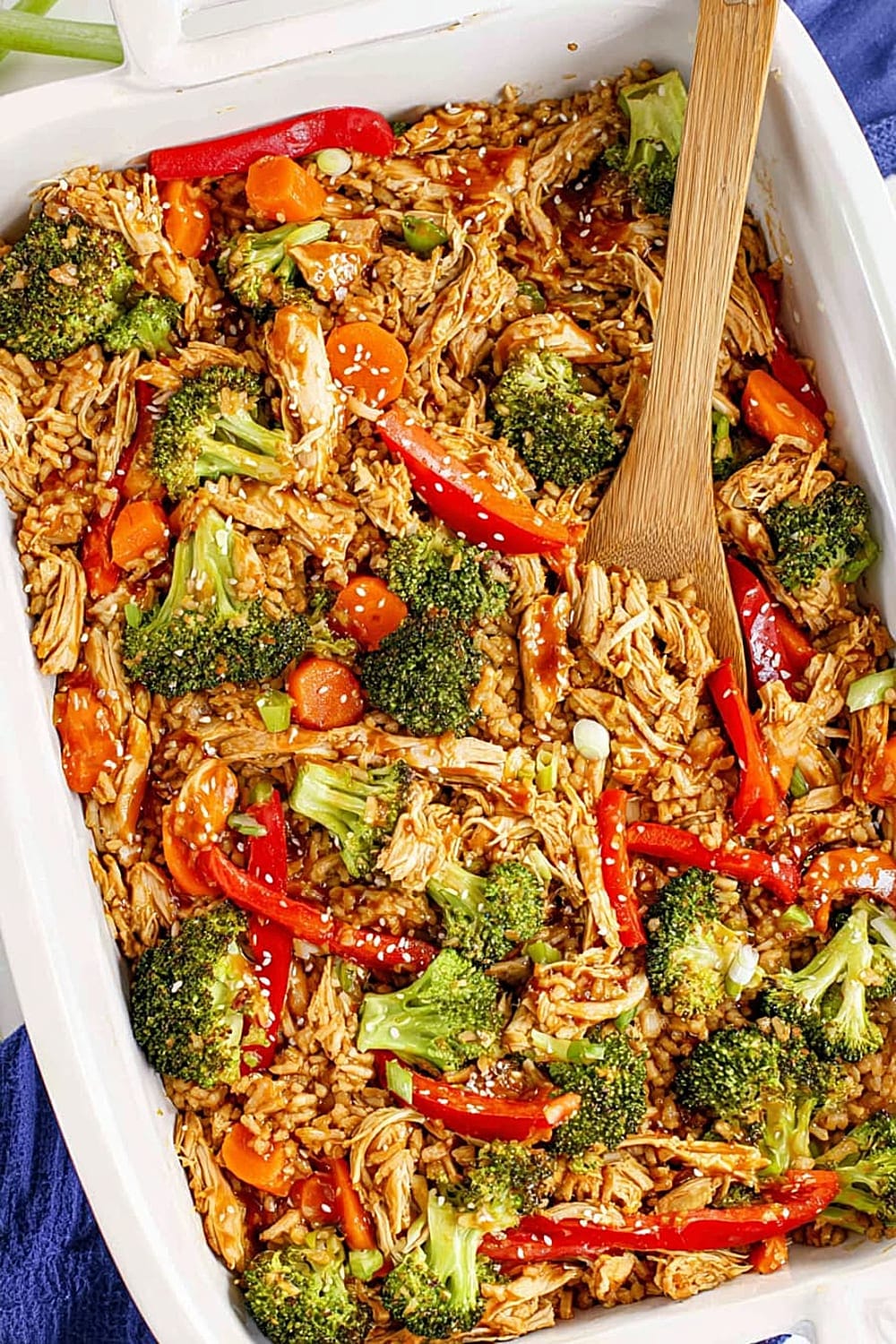
Picture tender chicken swimming in glossy teriyaki sauce, perfectly cooked vegetables, and fluffy rice all mingling together in one gorgeous, bubbly casserole.
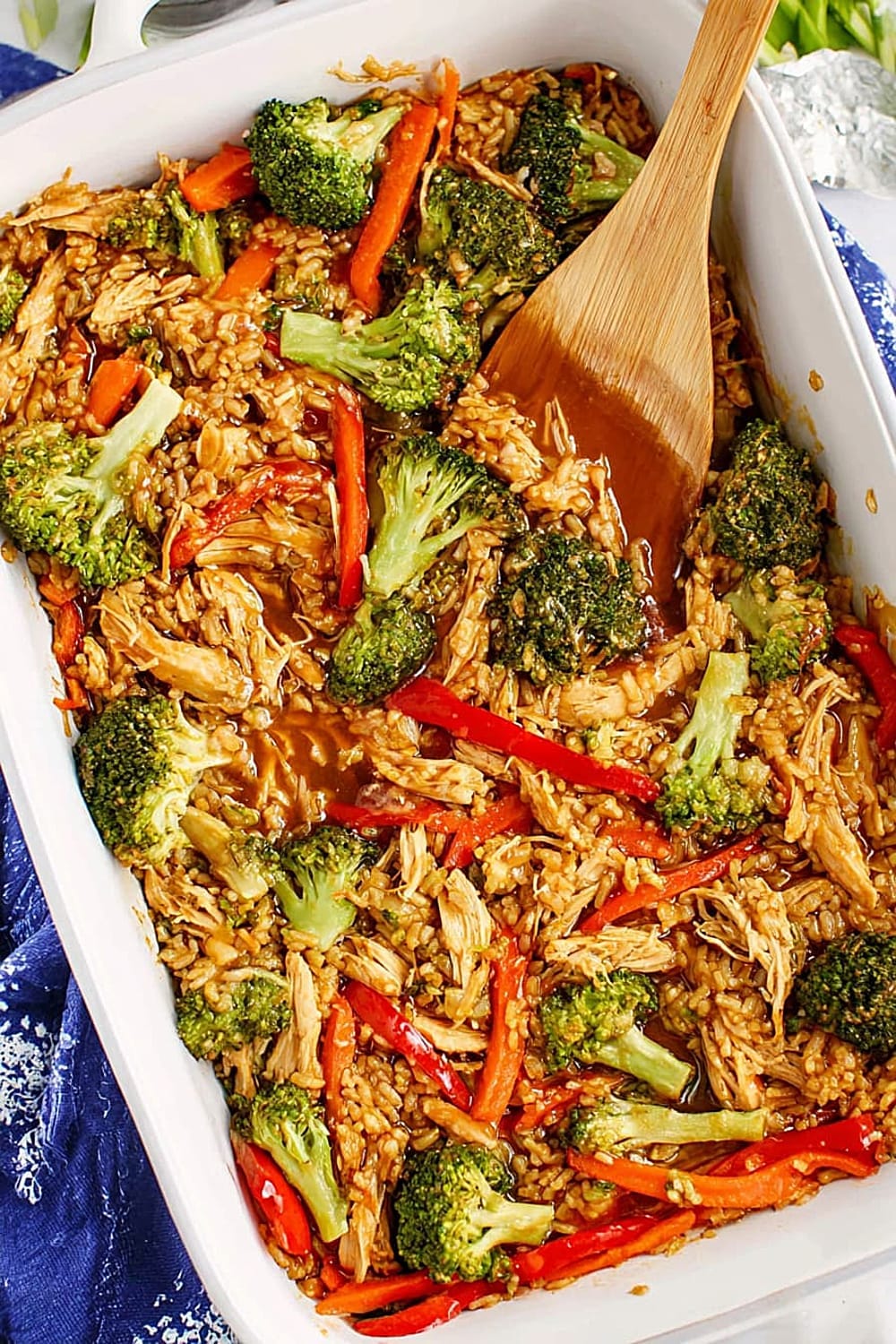
The best part is watching everyone’s faces when they take that first bite and realize you’ve somehow captured all the flavors of their favorite teriyaki bowl in casserole form.

We’re talking about 45 minutes from start to finish, with most of that time spent letting the oven do the heavy lifting while you catch up on Netflix.

The aroma alone will have your neighbors mysteriously finding reasons to drop by around dinnertime.
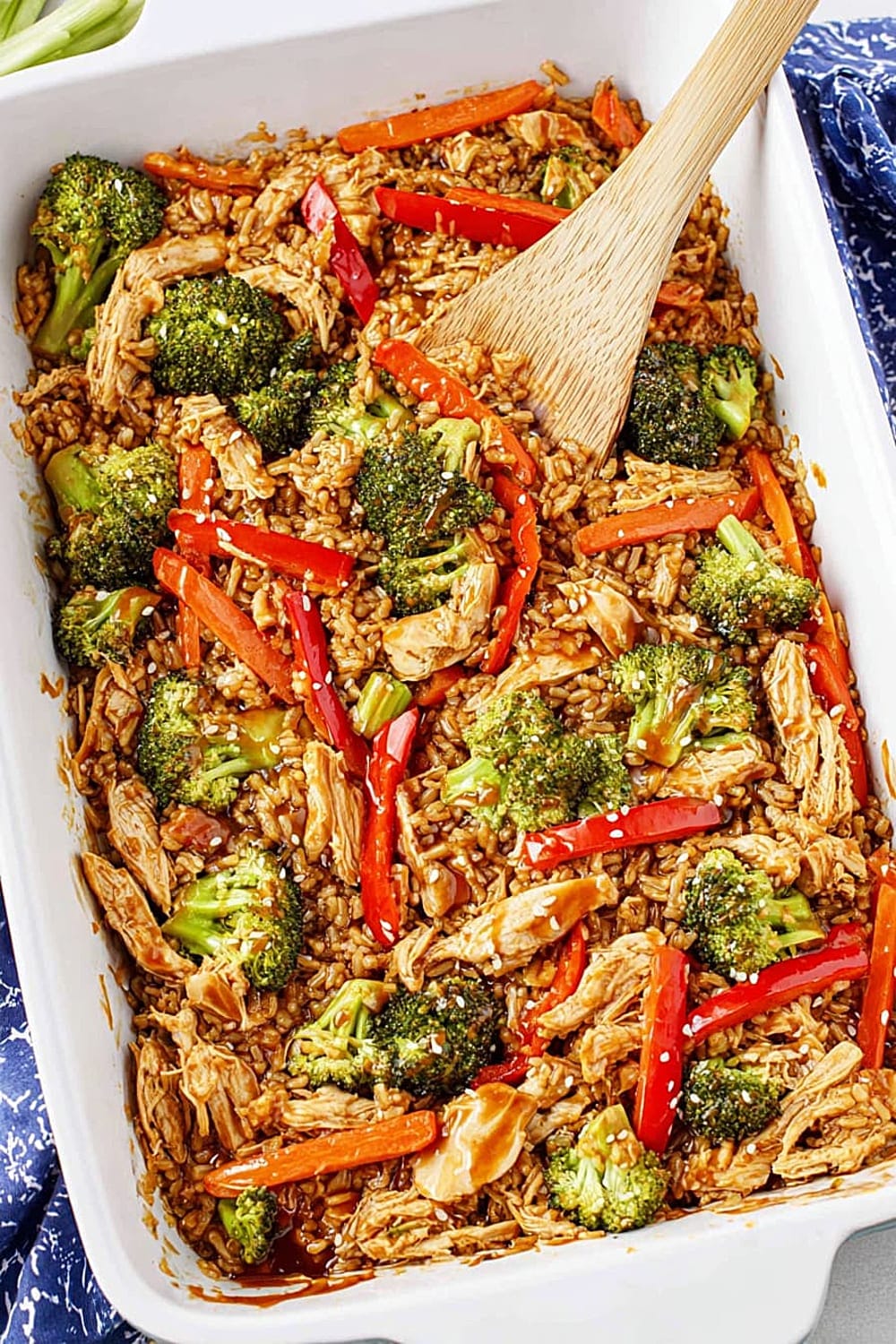
This recipe is basically your insurance policy against the dreaded “what’s for dinner?” question, delivering restaurant-quality flavors with minimal effort and maximum satisfaction.
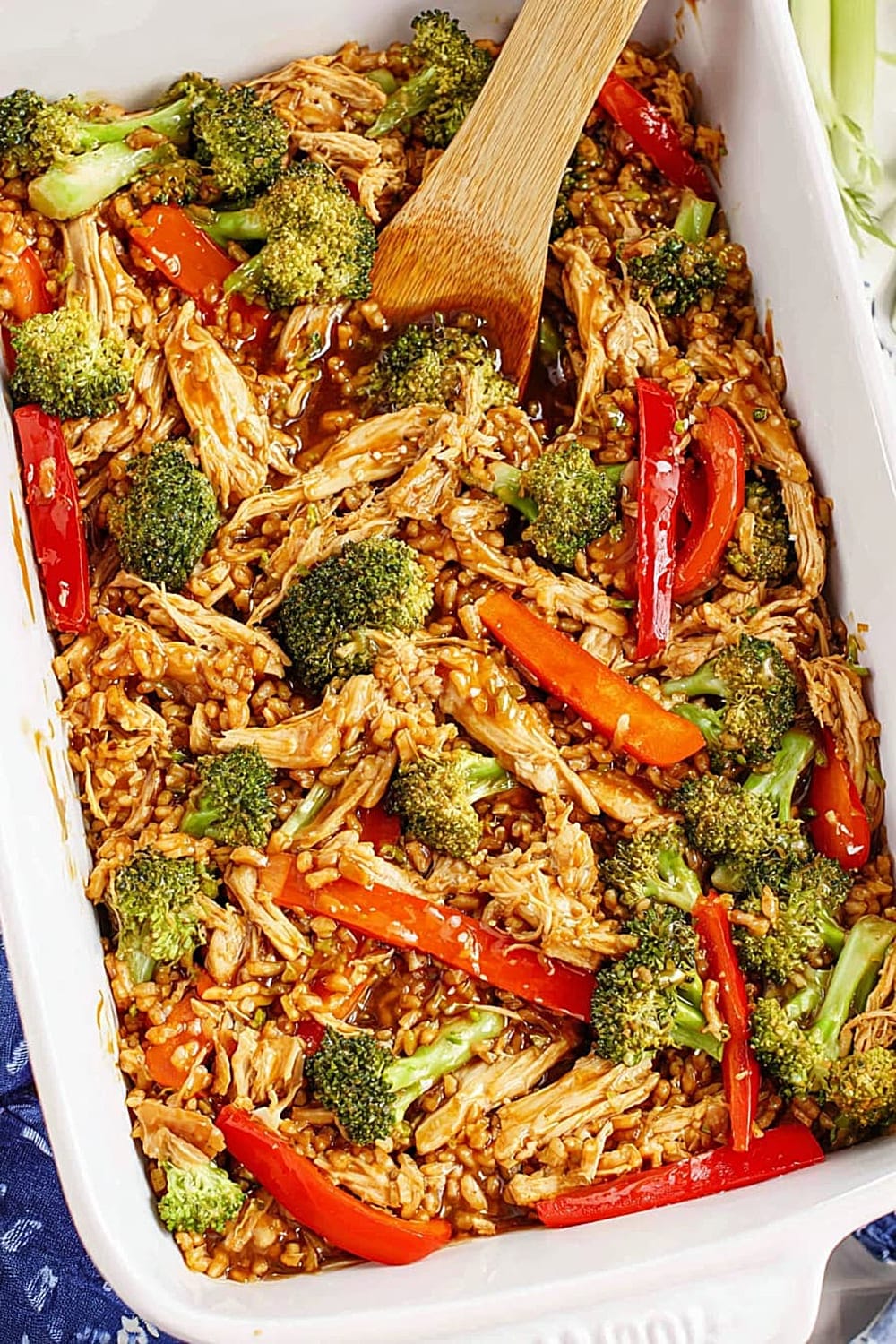
Ingredients
For the Casserole Base
- 1 pound boneless, skinless chicken breasts
- 12 ounces pre-cut fresh stir-fry vegetables (see notes)
- 3 cups cooked rice
- Olive oil spray for coating
For the Teriyaki Sauce
- 1 cup teriyaki sauce, plus 1/4 to 1/2 cup more for serving
- Salt and pepper to taste
For Garnish
- Sesame seeds for sprinkling
- Sliced green onions for fresh color and crunch
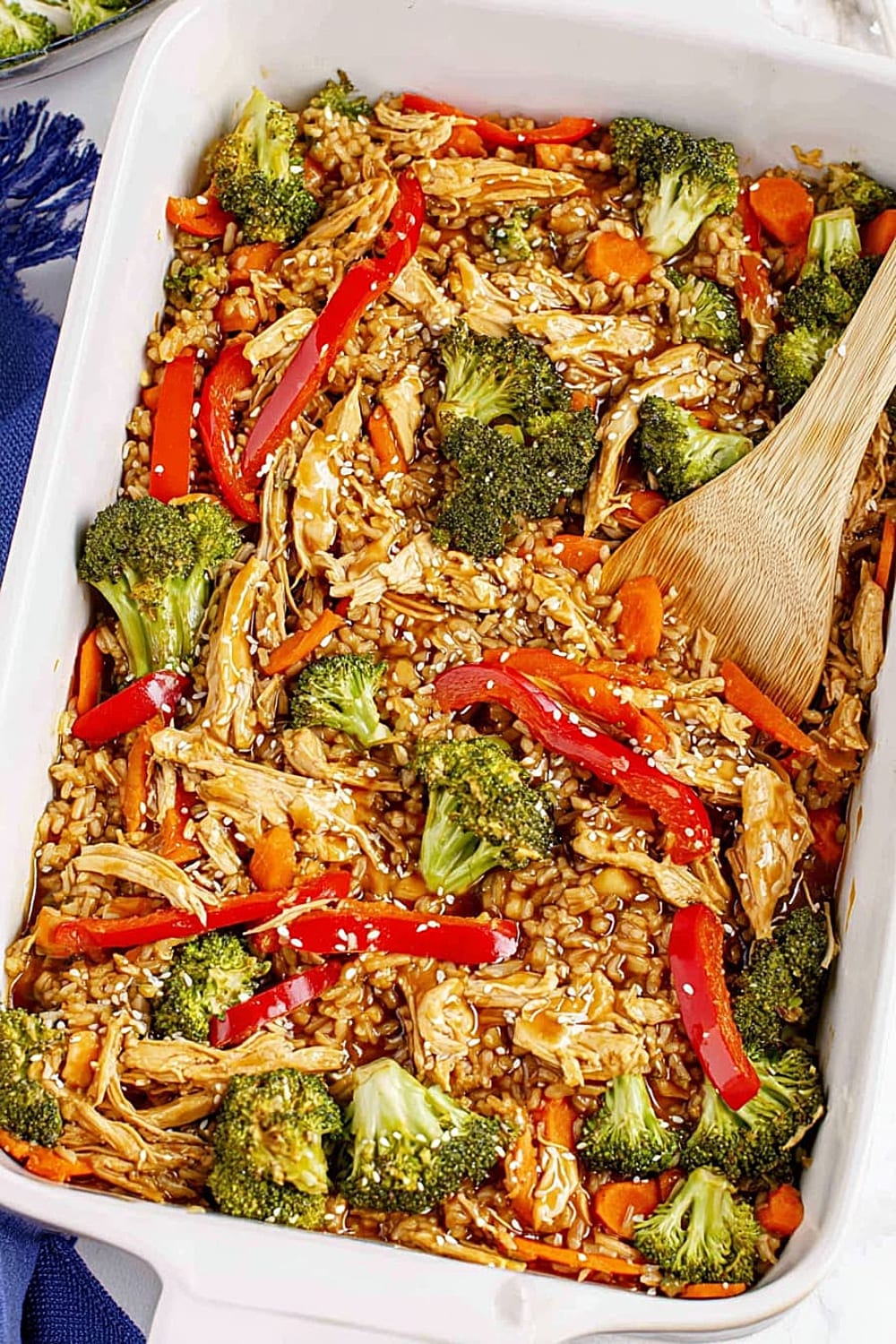
Instructions
Preparation
- 1 Preheat your oven to 400°F (200°C) and generously spray the bottom of a 9×13-inch baking pan with olive oil cooking spray. This prevents sticking and creates a beautiful golden bottom layer.
- 2 Place the 1 pound of chicken breasts in the center of the prepared pan, arranging them so they don’t overlap. Distribute the 12 ounces of stir-fry vegetables around the sides of the chicken, creating an even layer that will cook uniformly.
Initial Cooking
- 3 Spray both the chicken and vegetables generously with olive oil spray, then season everything with salt and pepper. The oil spray helps achieve that perfect golden color and prevents the vegetables from drying out during the initial baking phase.
- 4 Pour 3/4 to 1 cup of teriyaki sauce evenly over the chicken, allowing some to drip onto the vegetables. Cover the entire pan tightly with aluminum foil to create a steam environment that keeps the chicken incredibly moist.
- 5 Bake covered for 25 minutes, or until the chicken reaches an internal temperature of 165°F (74°C) when checked with an instant-read thermometer. The chicken should be completely opaque with no pink remaining in the thickest part.
Finishing the Dish
- 6 Remove the pan from the oven and carefully transfer the chicken to a cutting board. Allow it to rest for 5 minutes while you stir the vegetables and return them to the oven, uncovered, for an additional 10 minutes until they’re fork-tender and slightly caramelized.
- 7 While the vegetables finish cooking, shred the rested chicken into bite-sized pieces using two forks. The meat should pull apart easily and absorb the teriyaki flavors beautifully.
- 8 Remove the vegetables from the oven and add the 3 cups of cooked rice and shredded chicken back to the pan. Drizzle with an additional 1/4 to 1/2 cup of teriyaki sauce and gently fold everything together until well combined.
- 9 Return to the oven for a final 5 minutes to heat through and allow the flavors to meld. Serve immediately in bowls, garnished with sesame seeds and sliced green onions, with extra teriyaki sauce on the side.
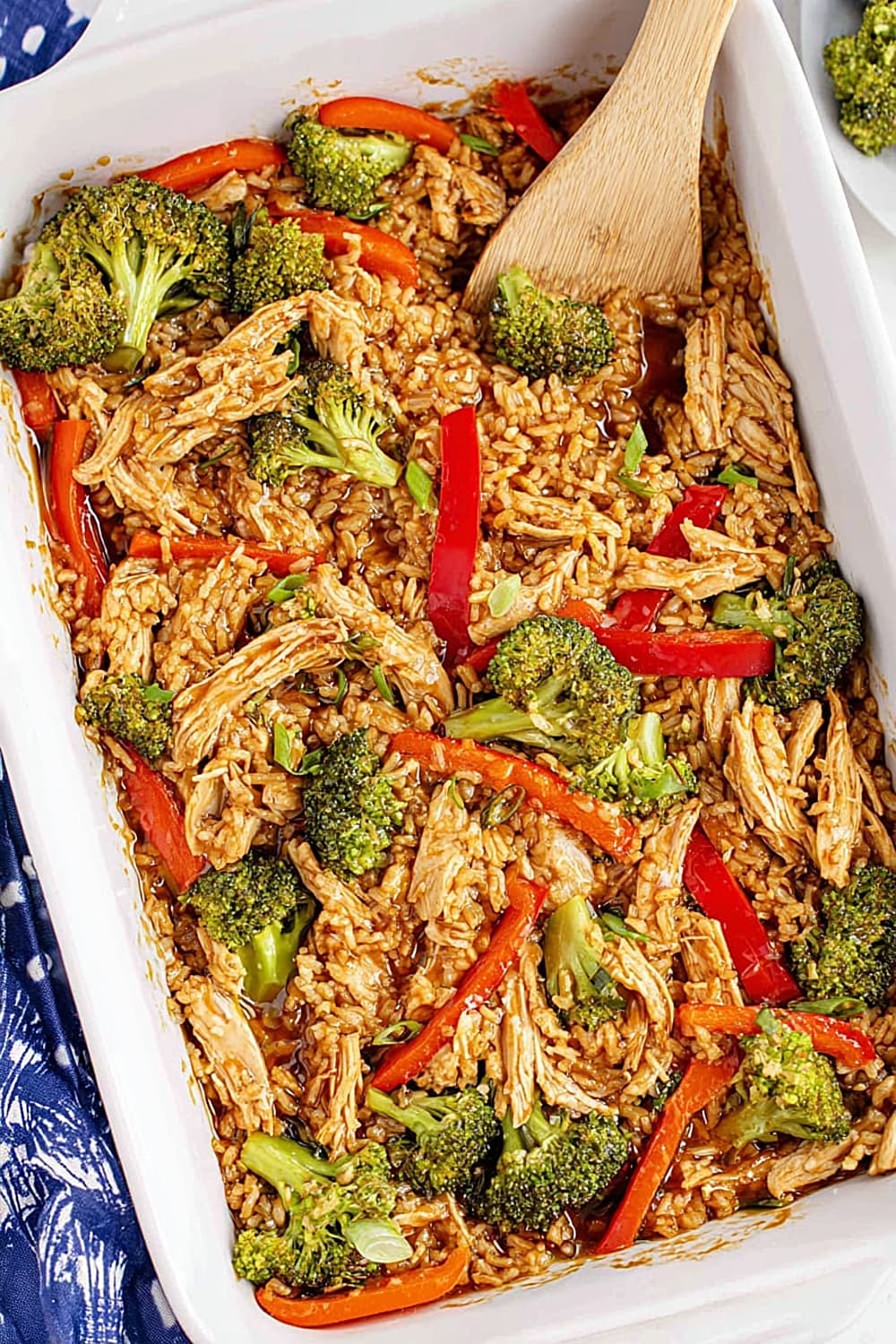
Recommended Equipment and Kitchen Tools
Essential Tools (for best results):
- 9×13-inch baking dish – A heavy-duty glass or ceramic dish distributes heat evenly and prevents hot spots that could overcook the chicken
- Instant-read thermometer – Takes the guesswork out of determining when your chicken is perfectly cooked to 165°F (74°C)
- Aluminum foil – Creates the perfect steam environment for tender, juicy chicken
- Large cutting board – Provides ample space for safely shredding the hot chicken
Helpful Upgrades:
- Kitchen scale – For precise measurements of chicken and vegetables, ensuring consistent results every time
- Silicone spatula – Perfect for gently folding the rice and chicken together without breaking up the tender pieces
- Non-stick cooking spray – While olive oil spray works great, a high-quality non-stick spray prevents any sticking issues
Nice-to-Have Options:
- Meat claws or shredding forks – Makes quick work of shredding the chicken into perfect bite-sized pieces
- Glass storage containers – Ideal for storing leftovers and reheating individual portions throughout the week
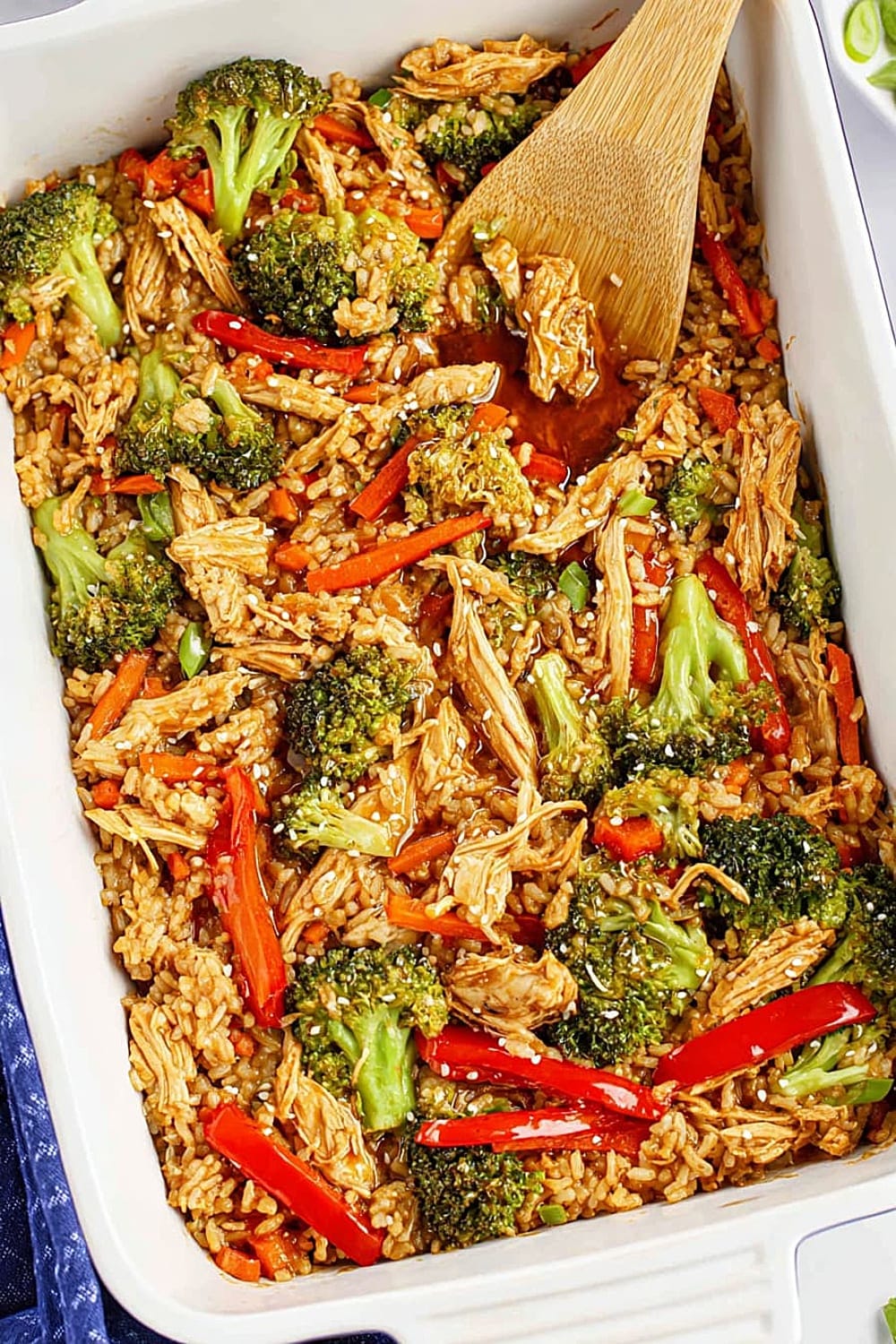
Recipe Variations and Dietary Modifications
Gluten-Free Adaptation:
- Use tamari or gluten-free teriyaki sauce instead of regular teriyaki sauce
- Verify that your stir-fry vegetables don’t contain any gluten-containing seasonings
- Consider using cauliflower rice instead of regular rice for a lower-carb option
Dairy-Free Modifications:
- This recipe is naturally dairy-free when using most commercial teriyaki sauces
- Double-check your teriyaki sauce label to ensure no dairy ingredients are included
- Use coconut oil spray instead of butter-flavored cooking sprays
Low-Carb/Keto Version:
- Replace the 3 cups of rice with cauliflower rice or shirataki rice
- Use a sugar-free teriyaki sauce or make your own with coconut aminos
- Add extra vegetables like broccoli, bell peppers, and snap peas to increase volume
Flavor Variations:
- Hawaiian Style: Add pineapple chunks and red bell peppers for a tropical twist
- Spicy Version: Mix sriracha into the teriyaki sauce or add red pepper flakes
- Sesame Ginger: Add fresh grated ginger and extra sesame oil to the sauce
- Protein Swap: Use salmon, shrimp, or tofu instead of chicken for variety

Nutritional Information and Health Benefits
Key Nutritional Highlights:
This teriyaki chicken casserole provides approximately 320-350 calories per serving, with a balanced macronutrient profile featuring 25-30 grams of high-quality protein from the chicken, 35-40 grams of complex carbohydrates from the rice, and 8-10 grams of healthy fats. The dish is rich in B vitamins, particularly niacin and B6 from the chicken, and provides significant amounts of vitamin C and fiber from the mixed vegetables.
Health Benefits of Main Ingredients:
The boneless chicken breast serves as an excellent source of lean protein, supporting muscle maintenance and providing all essential amino acids. The mixed stir-fry vegetables typically include nutrient-dense options like broccoli, carrots, and snap peas, delivering antioxidants, vitamin K, and folate. Brown rice (if used) adds magnesium and selenium, while the teriyaki sauce contributes umami flavors that can help satisfy cravings and promote meal satisfaction.
Dietary Considerations:
This recipe is naturally gluten-free when prepared with tamari-based teriyaki sauce and is dairy-free by default. The balanced combination of protein, carbohydrates, and vegetables makes it suitable for active individuals and families seeking nutritious comfort food. Each serving provides approximately 4-6 grams of fiber and fits well into Mediterranean or balanced eating patterns.
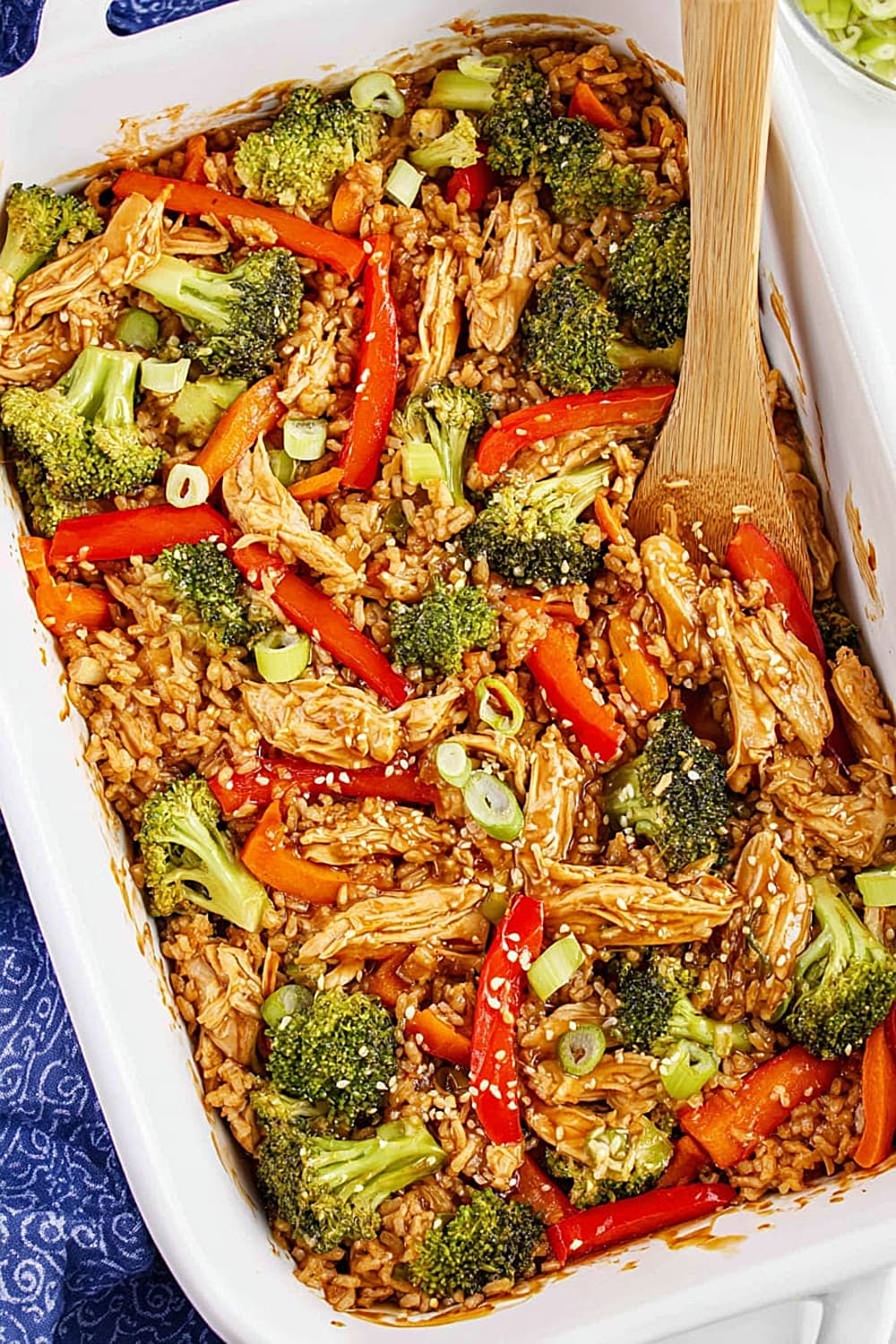
Smart Swaps and Ingredient Substitutions
Common Substitutions:
- Chicken breasts → Chicken thighs, salmon fillets, or extra-firm tofu (adjust cooking time accordingly)
- Pre-cut stir-fry vegetables → Fresh broccoli, bell peppers, snap peas, and carrots cut into bite-sized pieces
- Cooked rice → Quinoa, cauliflower rice, or cooked brown rice for different nutritional profiles
- Teriyaki sauce → Homemade sauce using soy sauce, honey, ginger, and garlic
Budget-Friendly Swaps:
- Pre-cut vegetables → Whole vegetables that you cut yourself (saves 30-40% on cost)
- Boneless chicken breasts → Bone-in thighs (remove bones after cooking, more flavorful and economical)
- Store-bought teriyaki → Homemade version using pantry staples
Pantry Emergency Substitutions:
- Fresh vegetables → Frozen stir-fry mix (no need to thaw, add directly to pan)
- Teriyaki sauce → Soy sauce + honey + garlic powder in a 3:1:1 ratio
- Sesame seeds → Chopped almonds or crushed peanuts for crunch
Pro Tips for Substitutions:
- When using frozen vegetables, increase cooking time by 5-10 minutes to account for extra moisture
- Darker meats like thighs may need an additional 10-15 minutes of cooking time
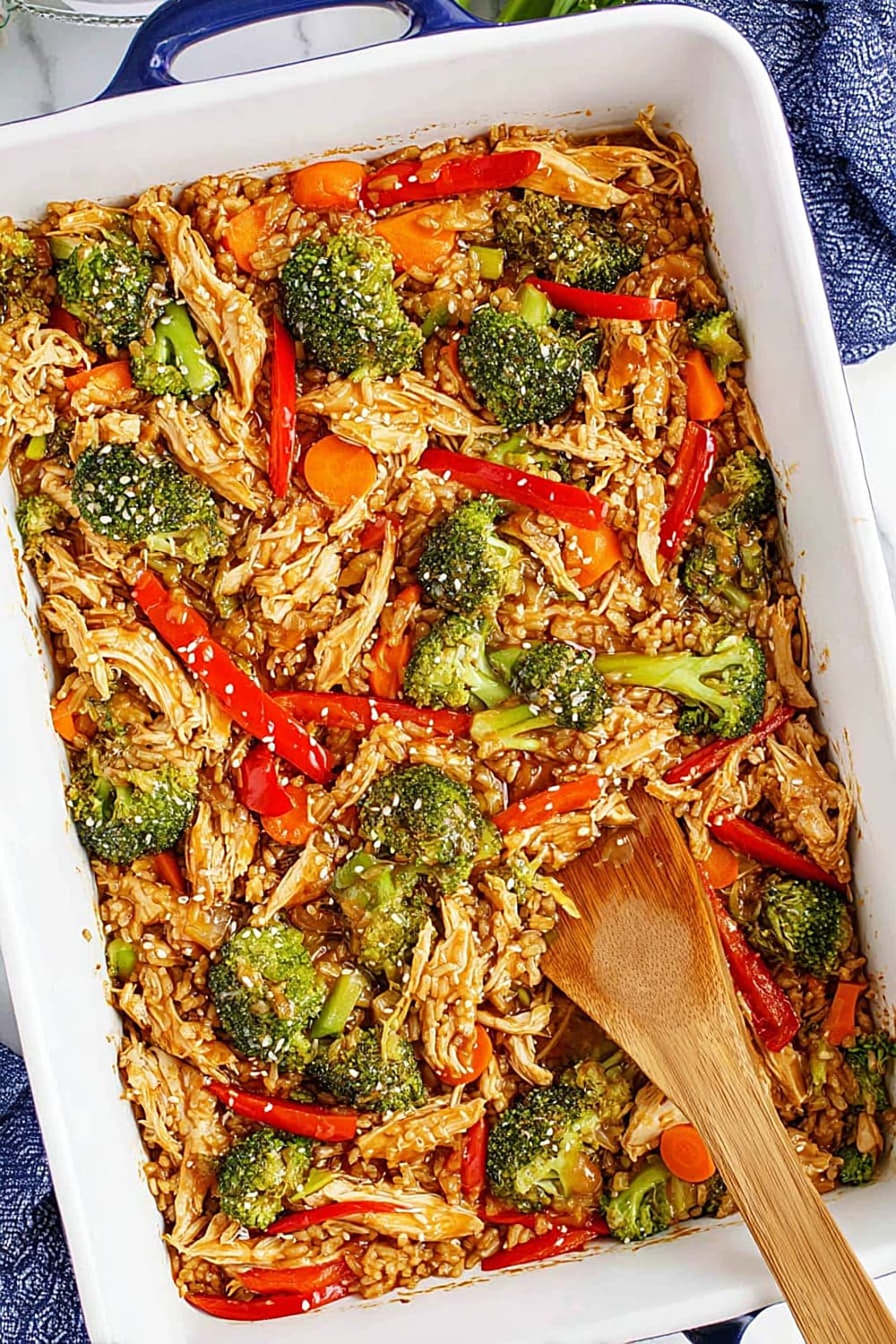
Make It Diabetes-Friendly
Carb Reduction Strategies:
- Replace regular rice with cauliflower rice to reduce carbs from 35-40g to 8-10g per serving
- Use shirataki rice or konjac rice for an even lower-carb option with only 2-3g carbs per serving
- Choose sugar-free teriyaki sauce or make your own using coconut aminos and stevia
Portion & Timing Tips:
- Stick to 1 cup portions to maintain reasonable carb intake
- Pair with a side salad to increase fiber and slow glucose absorption
- Consider this as your main carb source for the meal, skipping bread or other starches
- Total estimated carbs: 15-20g per serving when using cauliflower rice and sugar-free sauce
Blood Sugar Management:
- The protein and fiber combination helps slow glucose absorption
- Chromium from the vegetables may help with glucose metabolism
- Consider adding extra non-starchy vegetables like zucchini or bell peppers to increase volume without adding carbs
Preparation Tips:
- Meal prep portions in containers for consistent carb counting
- Add healthy fats like avocado slices when serving to further slow carb absorption

Perfect Pairing Suggestions
Beverage Pairings:
A crisp Riesling or Pinot Grigio complements the sweet-savory teriyaki flavors beautifully, while Japanese green tea or jasmine tea provides an authentic Asian-inspired pairing. For non-alcoholic options, try sparkling water with lime or unsweetened iced tea to cleanse the palate between bites.
Side Dish Recommendations:
Asian cucumber salad with rice vinegar dressing provides a cooling contrast to the warm, saucy casserole. Steamed edamame with sea salt adds extra protein and a satisfying pop of texture. Miso soup makes an excellent starter, while pickled vegetables offer a tangy counterpoint to the sweet teriyaki glaze.
Complete Meal Ideas:
Start with vegetable spring rolls or gyoza dumplings as appetizers, serve the casserole as your main course, and finish with fresh fruit like sliced pears or mandarin oranges for a light, refreshing dessert. Coconut rice pudding works beautifully for special occasions.
Occasion Suggestions:
This casserole shines at weeknight family dinners, casual entertaining, and meal prep sessions. It’s perfect for potluck gatherings and office lunch meetings. The presentation is elegant enough for date nights but comfortable enough for Sunday family meals.
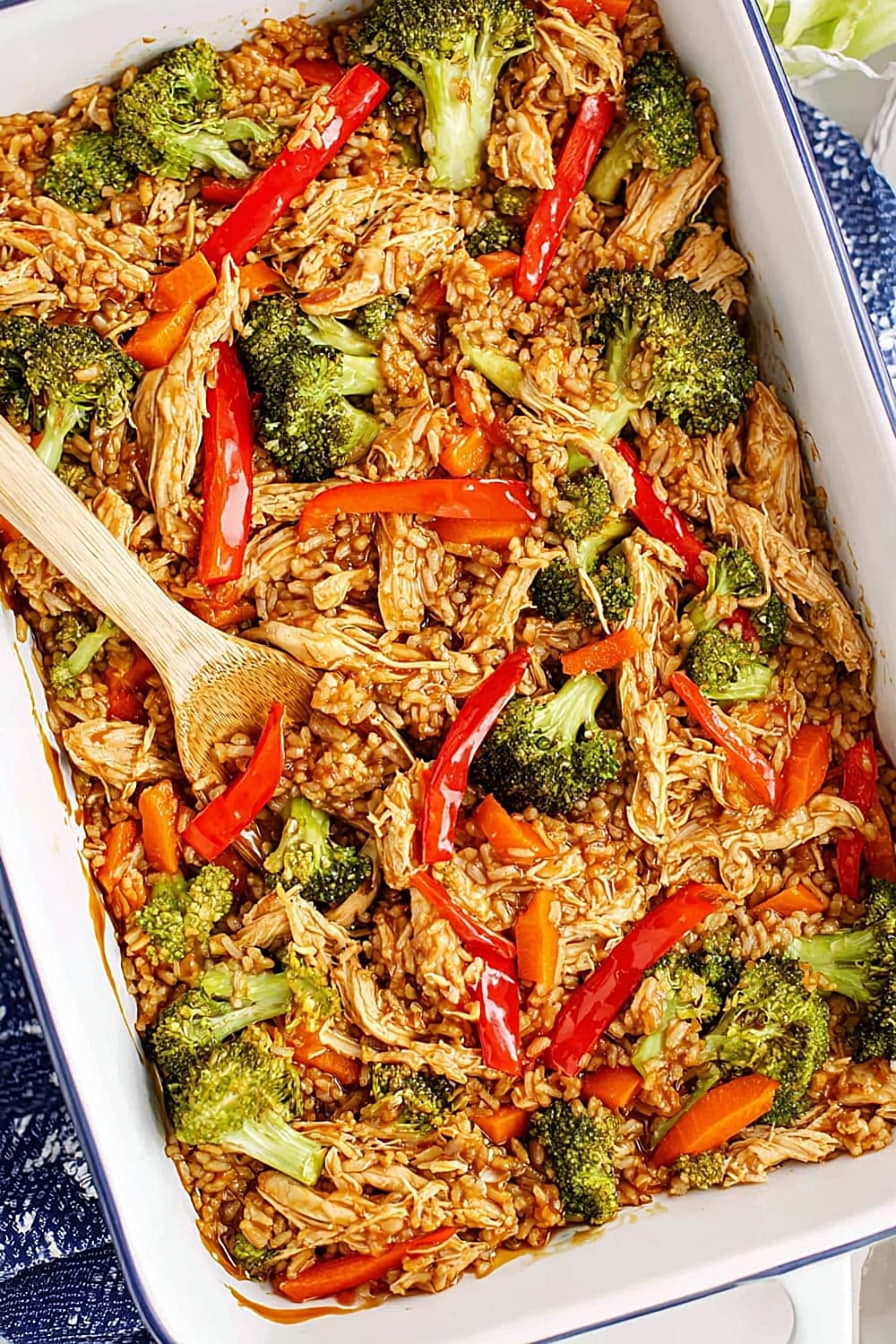
Pro Tips and Troubleshooting
Professional Techniques:
Always let your chicken rest after the initial cooking phase – this redistributes the juices and prevents dry, stringy meat when shredding. Pat the chicken dry before seasoning to ensure the teriyaki sauce adheres properly and creates better caramelization. Use a digital thermometer to check doneness rather than relying on visual cues alone.
Common Mistake Prevention:
Avoid overcrowding the pan – if doubling the recipe, use two pans or the vegetables won’t cook evenly. Don’t skip the foil covering during initial baking, as this creates the steam needed for tender chicken. Resist the urge to peek frequently, as this releases valuable steam and extends cooking time.
Storage and Reheating:
Store leftovers in the refrigerator for up to 4 days in airtight containers. Reheat individual portions in the microwave with a splash of water or teriyaki sauce to prevent drying out. This casserole freezes well for up to 3 months – thaw overnight in the refrigerator before reheating.
Make-Ahead Strategies:
Prep all ingredients the night before and store in the refrigerator. You can even assemble the entire casserole up to the point of adding rice, then cover and refrigerate. Cook rice in advance and store separately until ready to combine.
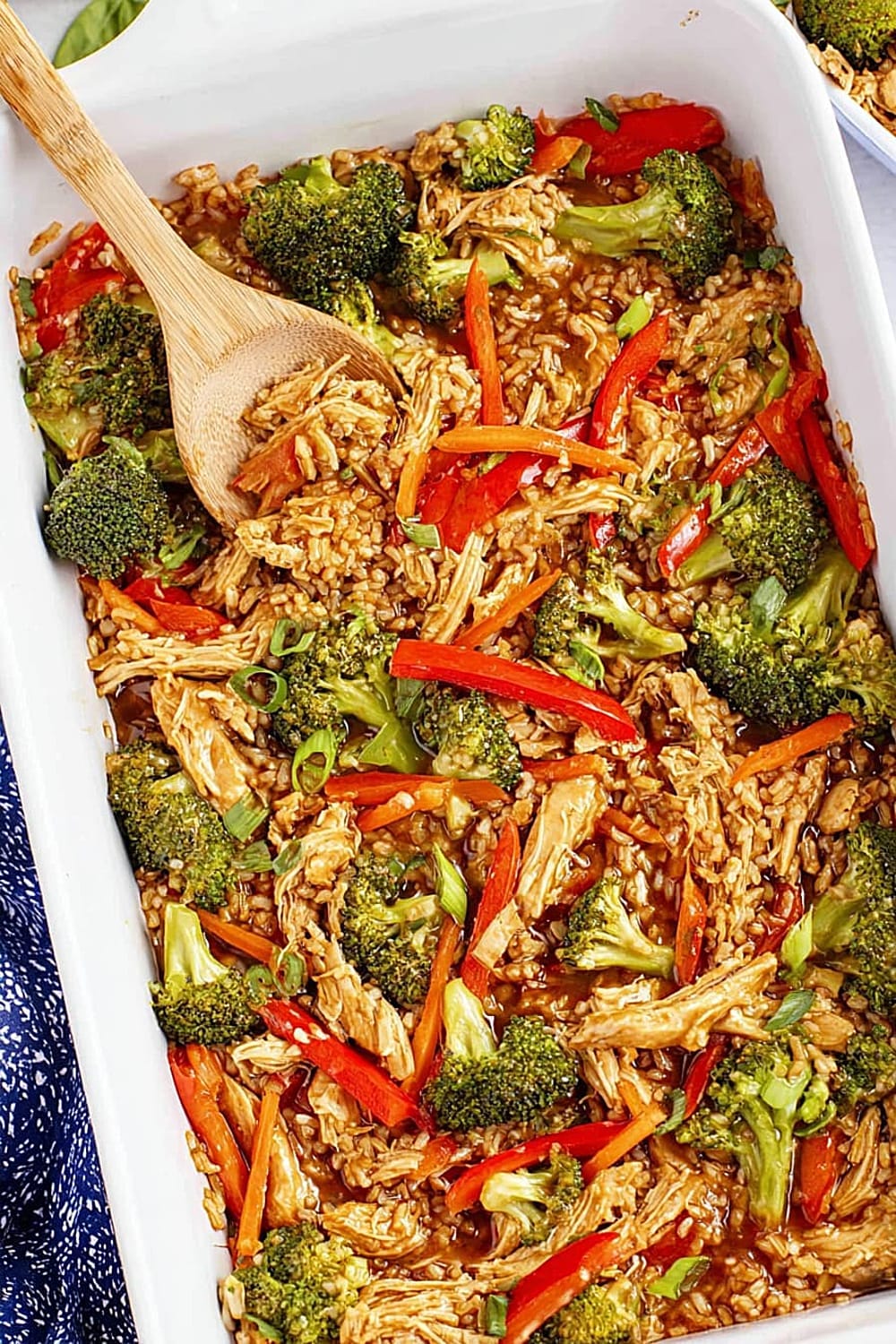
This teriyaki chicken casserole proves that comfort food doesn’t have to be complicated – sometimes the best meals are the ones that bring everyone together around the table with minimal fuss and maximum flavor.